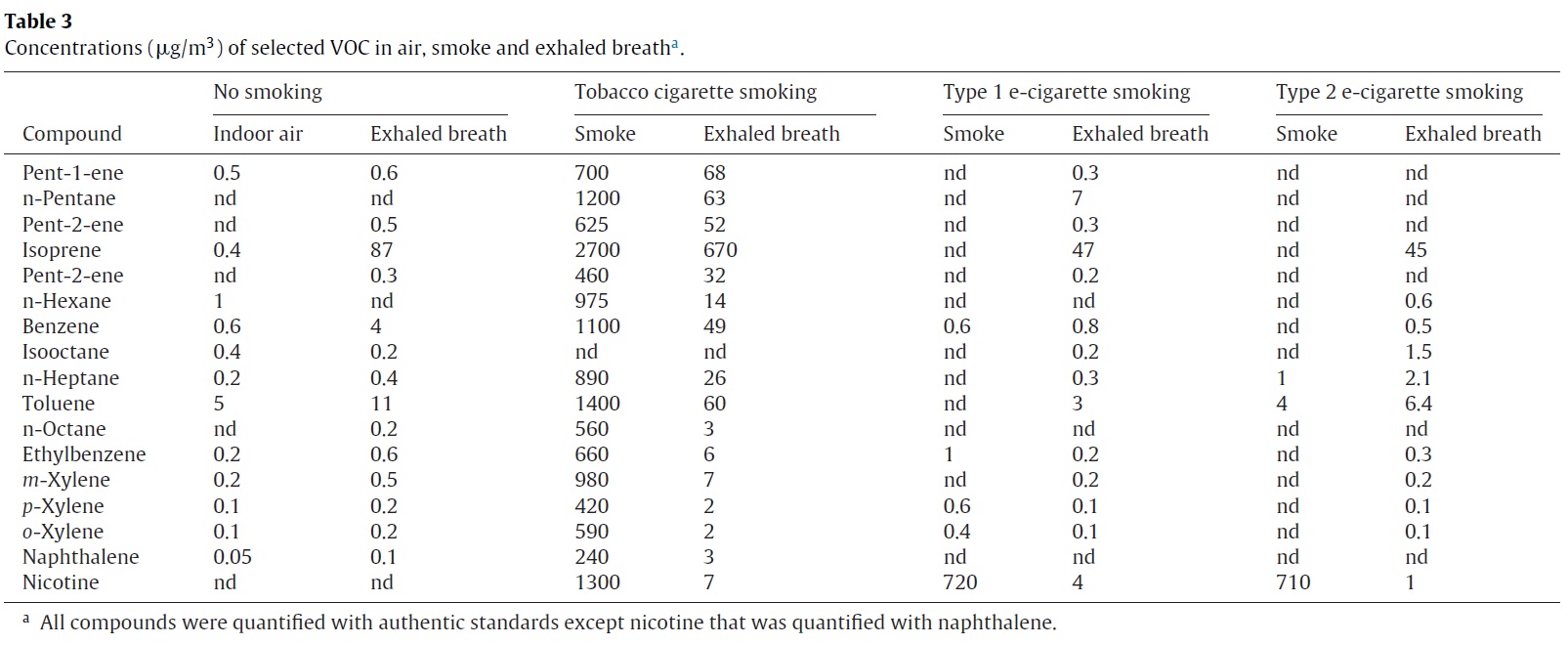Study of VOCs on exhaled breath of smokers and vapers: clarifications related to the study protocol
- Friday, 11 September 2015 16:54
By Dr Farsalinos
Three days ago, I published a comment related to a study by the Spanish Council of Scientific Research in which they measured Volatile Organic Compounds (VOCs) in the smoke of tobacco cigarettes, aerosol of e-cigarettes, indoor air and exhaled breath of before and after smoking and e-cigarette use. Although I mentioned the fact that there were some methodological issues with the study, it seems that there is some more. First, I would like to thank Prof Bernd Mayer for noticing and further exploring some issues related to that study.
The study mentioned (and I missed that) that the exhaled breath was evaluated 30 minutes after vaping or smoking. Obviously, this cannot be accepted as a way of evaluating second-hand exposure to e-cigarettes. It seems that the goal of the researchers was to evaluate VOCs that were retained for long time to the lungs after smoking and e-cigarette use. Although this might be of value in assessing local lung damage from retained harmful VOCs, it is not an appropriate method to assess what is exhaled in the environment of people who smoke of use e-cigarettes.
In any case, my comment is valid in terms of second-hand vaping due to the results of cigarette smoke, e-cigarette aerosol, indoor air and exhaled breath analysis of VOCs. Thus, the conclusion that indoor air and normal exhaled breath contain more VOCs than e-cigarette aerosol is valid because that was based on the analysis of smoke and aerosol. I calculated 17 and 25 VOCs in the aerosol of the 2 e-cigarettes tested, 36 VOCs in indoor air and 42 in normal (non-smoking, non-vaping) exhaled breath. Tobacco cigarette smoke contained 86 VOCs. Since the aerosol contains small amounts of few VOCs, obviously, you cannot expect vapers to exhale more than what is present to the aerosol unless they come from endogenous production in the human body (which is happening). The major change in the conclusions is that the exhaled breath of smokers (without the 30 minutes delay from smoking to performing the measurements) would contain by far larger amounts of VOCs than present in this study.
In conclusion, the study findings related to exhaled breath after smoking and after e-cigarette use are related only to long-term (at least 30 minute) retention of VOCs in the lungs. The analysis of indoor air, normal exhaled breath, cigarette smoke and e-cigarette aerosol are still valid and related to the conclusions I presented in my previous comment.
I am reposting the table I presented in my previous comment. I suggest you ignore the exhaled breath results under tobacco smoking and e-cigarette smoking, and focus on smoke (from cigarettes and e-cigarettes) as well as non-smoking indoor air and exhaled breath.






